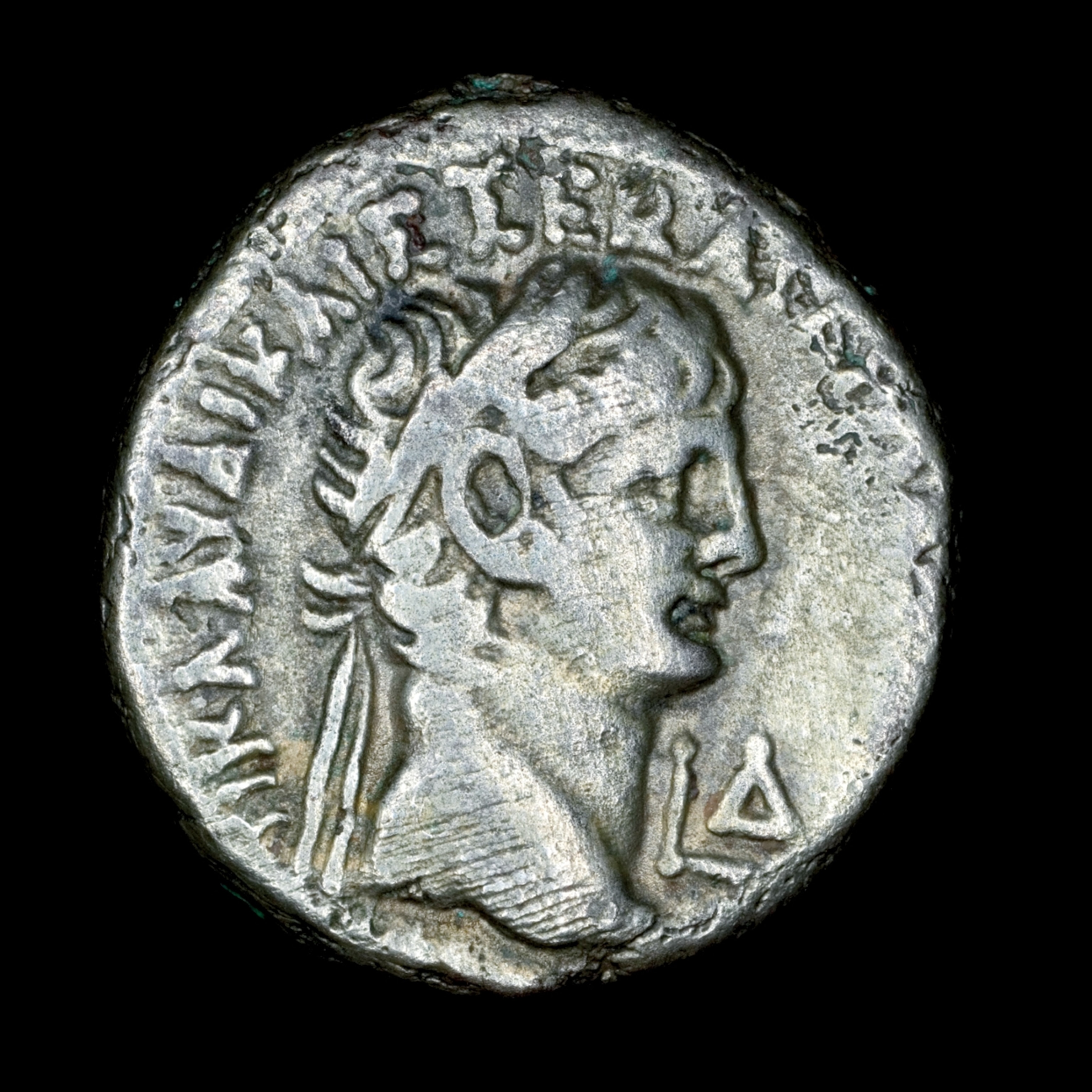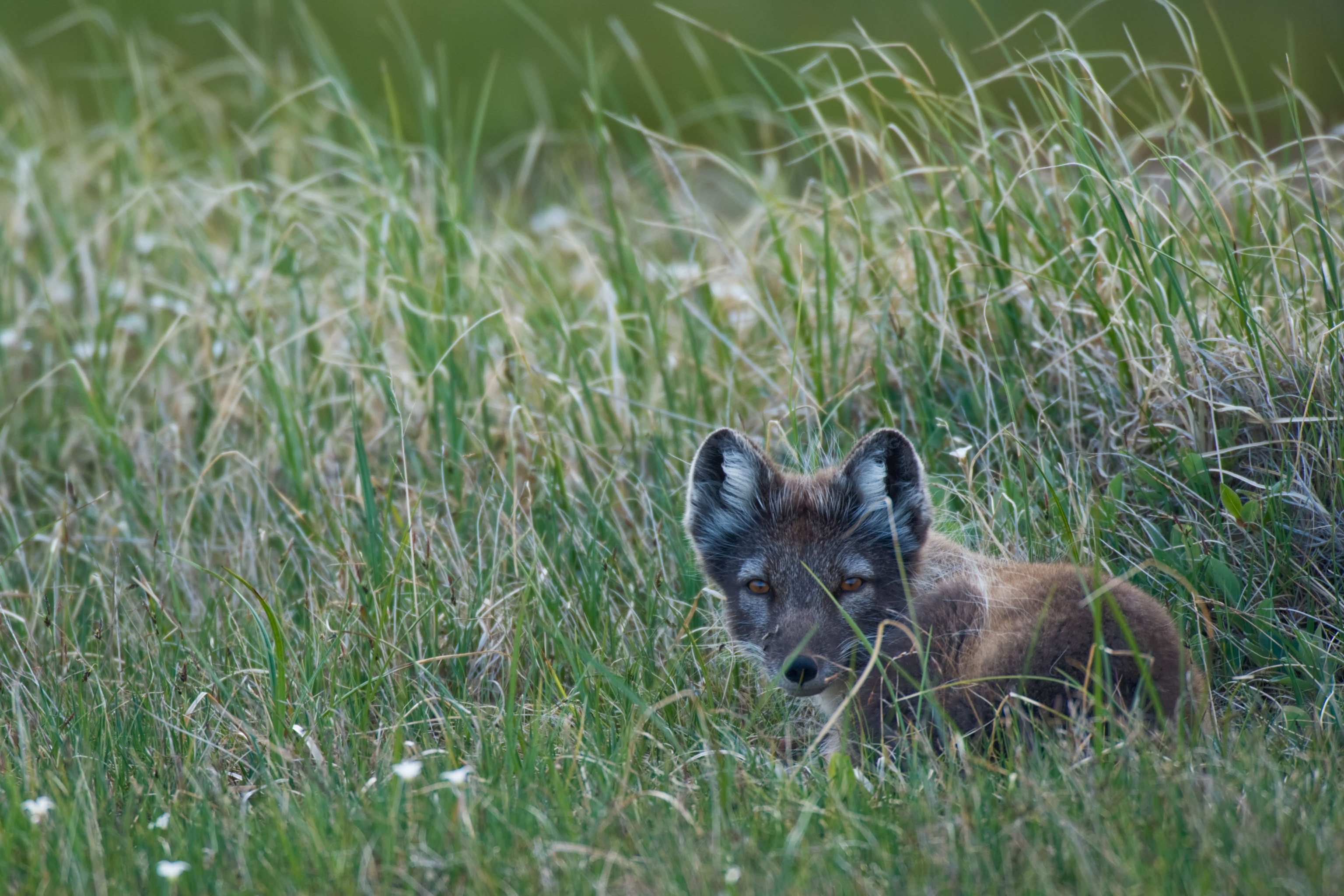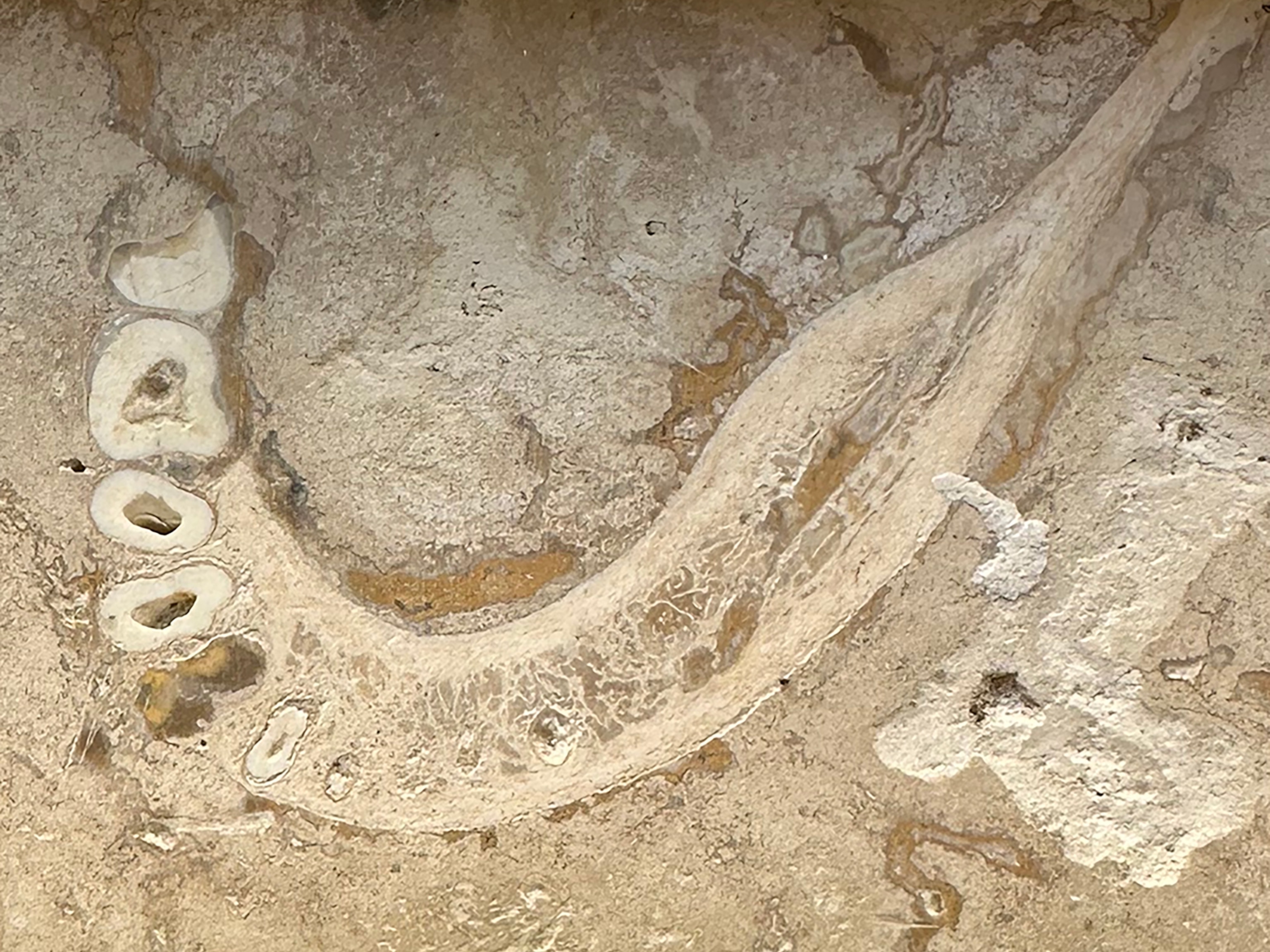
America's Most 'Toxics-Releasing' Facility Is Not Where You'd Think
In 2016 Alaska's Red Dog Mine officially released 756 million pounds of toxic chemicals, and residents in a native village 50 miles away are worried they're being contaminated.
Kotzebue is an Alaskan city located on a sound bordering the Chukchi Sea, about 30 miles above the Arctic Circle. The city features the Nullaġvik Hotel, a number of B&B’s, several churches, and a restaurant called Little Louie’s that serves breakfast burritos and nachos. About 70 percent of the 3,500 residents are Iñupiat Eskimo, and native traditions hold strong too.
Many residents stick as much as possible to a subsistence lifestyle, hunting seal from the sea, and journeying onto a rolling tundra landscape of braided rivers and majestic mountains to hunt geese, ptarmigan, moose, and caribou of the great Western Arctic Caribou Herd, which recently numbered 259,000, the largest in Alaska. But the city also has a less savory distinction, detailed in an EPA dataset called the Toxics Release Inventory (TRI).
The inventory requires industrial facilities involved in manufacturing, mining, power generation, and other sectors to report exactly how much toxic chemicals, from a list of about 650, they release into the environment. Data from the 2016 TRI was released last year, and according to this metric, Kotzebue produced the most toxics of any community in America.
Yet, in contrast to what an earlier version of this story may have implied, none of these toxic releases came from within the bounds of this small tundra metropolis. Rather, all 756 million pounds of toxic chemicals attributed to “Kotzebue” on the TRI dataset came from one of the world’s largest zinc and lead mines, the Red Dog Mine, which is located about 80 miles north of Kotzebue.
“A facility not located in a city, town, village, or similar entity will often list a nearby city,” said EPA spokesperson Mark MacIntyre, in explaining why the mine’s toxic releases were attributed to distant Kotzebue.
A breakdown of Red Dog’s 2016 releases reveals 83,578 pounds of cadmium compounds, 1,435,542 pounds of chromium compounds, 415,802 pounds of mercury compounds, and 319,192,113 pounds of lead compounds, all of which was reportedly disposed of on-site at the mine.
“It is really stunning to see this latest report,” said Pamela Miller, executive director of the Anchorage-based environmental health research and advocacy organization group Alaska Community Action on Toxics. “The mining industry will make the argument this is just waste rock, but the fact is you are bringing this large amount of heavy metal-concentrated ore to the Earth’s surface and exposing that to the elements, and this promotes the oxidization and leaching of these metals, which is why the EPA requires them to report this way under the TRI.”
Indeed, the Alaskan mining industry, which prides itself as being one of the best regulated mining sectors in the world, often takes issue with the way that TRI reporting works. In addition to Red Dog, the state also has one large open-pit gold mine, two large underground gold mines, and a large underground silver, zinc, gold, and lead mine (in addition to some large proposed projects). “The releases reported by the metal mining industry are large, and largely unavoidable, because of the nature of the mining business, which requires the extraction, movement, and containment of millions of tons of earth,” said Deantha Crockett, executive director of the Alaska Miners Association. “The TRI program is more often than not misused to unfairly portray mines as large polluters.”

But Miller maintains that although elements like lead and cadmium may be naturally occurring, they are nonetheless toxic. “Lead is one of the most well-known toxic substances, with neurotoxic properties that are very well established, and it is especially toxic to children,” said Miller. Cadmium and mercury are toxic to humans too, and heavy metals like this can linger in the environment for years, being blown about by northwest Alaska’s strong winds or accumulating in lichens, a source of food for caribou, which are then hunted by humans. “I think these lands [in and around the mine as well as in areas adjacent to the road used to haul ore from the mine to the coast] are going to be contaminated for the foreseeable future,” said Miller. “It’s a big concern, because many people in that area depend on subsistence food.”
The Red Dog
The TRI, established by Congress in 1986 after the deadly Bhopal India chemical explosion of 1984, requires industrial facilities involved in manufacturing, mining, power generation and other sectors to report exactly how much toxic material, from a list of about 650 toxic chemicals, they release into the environment. The goal is to alert communities to the possibility that they might be exposed to toxic chemicals, and the inventory has often been used by environmental organizations, community groups, and labor unions across the country.
So, is Kotzebue, the Alaskan city that all of Red Dog’s releases are attributed to, at risk? “I haven’t seen any evidence of that,” said Miller. Indeed, in Kotzebue, city officials do not appear to be familiar with the releases. “As far as I know it is safe,” said Kotzebue City Manager Billy Reich. “And as far as toxic releases, I wasn’t aware of anything like that.”
But in the Native village of Kivalina, about 80 miles up the coast from Kotzebue—and located closer to Red Dog—there is growing concern about the mine. The village is located near the mouth of the Wulik River, a source of fish and water for villagers. One of the creeks that flows into the Wulik is the Red Dog, which begins near the Red Dog Mine. Treated mine wastewater is discharged into the Middle Fork of Red Dog Creek under an Alaska Pollutant Discharge Elimination System permit. While folks in the mining sector claim this water is perfectly fine, many in Kivalina are not convinced.
“We started hearing and seeing the people getting sick, especially the newborns, with issues we have never seen before,” said Millie Hawley, the tribal transportation coordinator.
She described newborns being born with heart issues, including one infant that had to travel hundreds of miles for heart surgery, and said kidney problems were an issue for teenagers. “We believe it is from drinking [water contaminated by] the Red Dog Mine over the last 25 years,” she said, “but there is no proof of that.”
A 2007 report based on blood lead analysis of 248 people in Kivalina and 451 people in a native village further north called Point Hope was done by John Rosen, chief of environmental sciences at Albert Einstein College of Medicine in New York City. “At present, the blood lead surveys do not indicate a public health problem from excessive exposure to lead in Kivalina and Point Hope,” the report stated. However, such exposure could be possible in the future, the report notes. “However, for the future, it is impossible to rule out excessive lead exposure in either village from newly established pathways from nearby mining sites.” Miller believes future tests of Kivalina residents should look for not only lead, but also cadmium.

Hawley said the village has been trying to get the EPA to test for possible contamination in the village and surrounding area, though an assessment has yet to be made.
Ore from Red Dog is transported by eighty-ton haul trucks along a 50-mile road that links the mine to a port on the Chukchi Sea located about twenty miles south of Kivalina. There it’s stored in buildings, then transferred via barges to awaiting offshore bulk carrier ships. The haul road runs through a section of Cape Krusenstern National Monument.
A 2001 National Park Service report documented elevated levels of lead, cadmium, and zinc in vegetation along the road, as well as near the storage area by the port. Concentrations of lead and cadmium, the National Park Service report stated, exceed levels found in “many of the most polluted countries in Central and Eastern Europe and all areas of western Russia.”
The 2001 NPS report brought attention to the contamination concerns of Kivalina residents, and since its issue the mine operators have made changes. Trucks on the haul road are now covered in a more comprehensive manner. Emissions along the road are monitored by the mine and reported to the Alaska Department of Environmental Conservation. Any spills along the route are reported to this office as well, such as a zinc concentrate spill that occurred in 2015, and another one that occurred in 2016. The mine also works with the Alaska Department of Fish and Game to analyze caribou meat and organs for possible contaminants that could harm subsistence hunters. An independent subsistence committee, which consists of native hunters, also meets regularly to discuss mine-related risks to the herd.
Still, a paper on heavy metal deposition along the haul road published in 2017 in the journal PLOS One, and co-authored by several National Park Service scientists, analyzed data from the years 2001 and 2006 and found that, “fugitive dust escapement, while much reduced, is still resulting in elevated concentrations” of zinc, lead, and cadmium along sections of the haul road. “Contaminants within Cape Krusenstern National Monument is an important issue which we are actively monitoring,” said Peter Neitlich, an ecologist in the National Park Service’s Alaska Region and a co-author of the 2017 paper. New samples were collected in July 2017 and are presently being prepared for lab analysis, said Neitlich.
Looking for Clues
The Red Dog Mine opened in 1989 and is operated by Teck, a British Columbia-based metals and mining company. Teck operates copper and zinc mines in South America, coal mines in western Canada, and is aiming to develop a massive oil sands mine in the tar sands region of Alberta. The Red Dog Mine is located on land owned by NANA, an Alaska Native Corporation of the Iñupiat people. More than 600 NANA shareholders work at Red Dog as employees or contractors. Red Dog is more than just a mine, states NANA’s website, “it is a mechanism for hope and catalyst for the northwest Alaska and statewide economy.”
Teck senior communications specialist Chris Stannell explained that the emissions in the TRI report represent the large volume of rock and ore moved around at the remote mine site, and that this material is contained in storage systems and well regulated by state and federal permits. “In 2016, over 99.93 percent of reported releases from Red Dog in the TRI remained onsite in the waste rock and tailings storage impoundments,” said Stannell. The generation of such material is “standard during the mining process,” he added, “and does not indicate any environmental effect.”
Maija Katak Lukin is superintendent for the National Park Service’s Western Arctic Parklands, which includes Cape Krusenstern National Monument as well as nearby Noatak National Preserve and Kobuk Valley National Park. “There is some contamination,” she acknowledged, citing Neitlich’s research, “but contamination is such a bad word, it makes it seem like the worse thing in the world, it is within human consumable limits.”
Lukin pointed out that the mineral deposits being mined at Red Dog were always naturally visible at the surface and in the Red Dog creek. “There is responsible extraction of minerals and there is irresponsible extraction of minerals, and I believe Red Dog has gone through that phase of not knowing what they are doing, and then mitigating impacts, and I think now they are doing everything they can,” said Lukin.
Lukin grew up in a small traditional hunting community near the tip of Cape Krusenstern called Sheshalik, without electricity or running water. “I think that people who are indigenous are born with the understanding that the land sustains them, and they have to take care of the land for their survival,” said Lukin. “It is in our cellular history, and in our DNA.”
“Part of the reason that I came over to the park service,” she added, “is because the park service, as I see it, has a very similar set of values to the Iñupiat people.”
Future of Alaskan Mining?
Mines remain an issue of contention in Alaska. Presently, a hotly debated topic in northwestern Alaska is the Ambler Road, a 211-mile-long industrial road that would connect an interior mining district to the Dalton Highway, in central Alaska. Approximately 20 miles of the proposed road crosses National Park Service lands. In southwestern Alaska, a proposal by the Pebble Limited Partnership to mine a rich deposit of gold, copper and molybdenum was halted by the Obama administration in 2014, put back on the table by EPA Administrator Scott Pruitt last May, then suspended again by the EPA this past January, after the agency received over one million comments from interested stakeholders.
“From public comments to community meetings, stakeholders stressed the importance of balancing a singular mine venture with the risk to one of the world’s largest commercial fisheries,” read an EPA statement issued on January 26.
Red Dog has permits to operate its mine through 2031. One of Miller’s main concerns is that Teck will not be able to treat the toxic material they’ve brought to the surface forever; in her view, Red Dog is destined to become a federal Superfund site. “In order to prevent the downstream leaching of their mining tailings they would have to treat the wastewater in perpetuity,” said Miller. The State of Alaska “holds a significant financial assurance bond so that reclamation can be done without any cost to the state or taxpayers,” said Crockett, with the Alaska Miners Association. Red Dog’s bond was in the amount of approximately $558 million.
While many Alaskans appear to embrace the philosophy of NANA, and believe that minerals and indigenous foods can both be safely harvested in the same region, Miller said she sees a growing number of Alaskans critical of the extractive economy. They worry that industry provides only short-term economic benefits while causing long-term harm to the state’s nature and communities. “This is a divisive issue,” said Miller, “but I see a lot more resistance and opposition.”
















